Chinese painting in Abibas style
The series of events BRICS Dialogue on Civilisations finished with the exhibition The Great Series of Chinese Painting Through the Ages
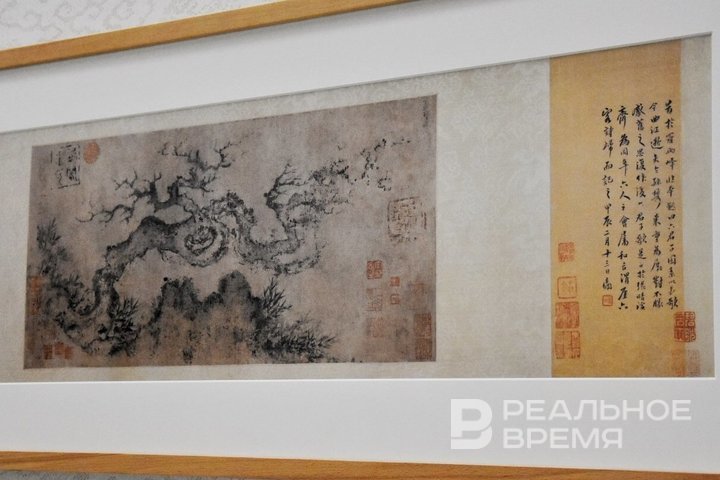
On September 24, representatives of BRICS countries from Russia, China, Brazil, India and South Africa gathered in the Imperial Hall of the Kazan Federal University (KFU). They presented reports on humanitarian, social and cultural exchange between the countries. After the official part, the delegations were given tours of two exhibitions located in the Marble Hall of the second building of the KFU. One of them was to demonstrate how China preserves its cultural heritage. But there was a substitution of concepts.
Odes to China
In general, in all the events, the names did not correspond to the content. For example, the official part is the BRICS Dialogue on Civilisations. One might think that the participants talked about building relationships or already established ties between different countries. In fact, all the speakers talked only about relations with China. Russia was represented by several people at once.
Vice Rector for Research at the KFU Dmitry Tayursky highlighted the number of foreign students at the university, naming their home countries. This was probably the only mention not only of China, but also of other BRICS countries. The main focus of the Russian representatives in their speech was on sports exchange. Olympic figure skating champion Denis Petrov became the headliner here. His story most vividly describes the close ties between Russia and China. Back in the late 1980s, at competitions, he met a young Chinese figure skater, who ten years later became his wife. After that, Petrov went to China, where he develops sports with his wife.
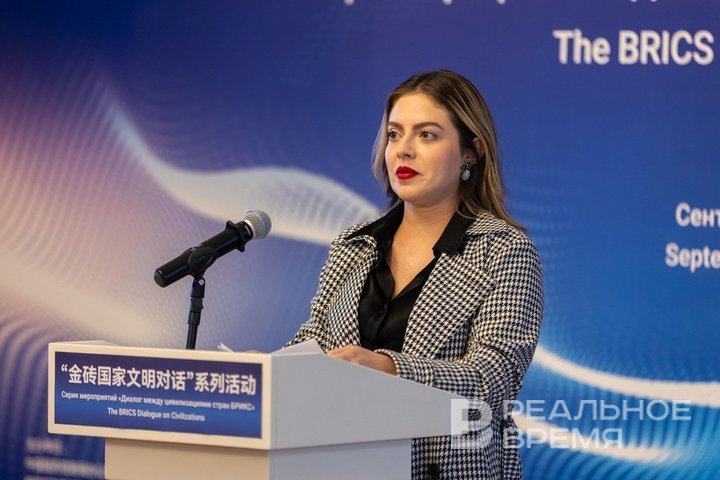
Talita Bernardo, Head of the office of the Second Vice President of the Legislative Assembly of the State of Rio de Janeiro, told how China helped Rio de Janeiro with the supply of medical masks during the coronavirus pandemic. Prof B.R.Deepak, Director of the Centre for Chinese and Southeast Asian Studies at Jawaharlal Nehru University, generally recalled the story of a century ago, when an Indian public figure came to China, established contacts there, and then translated several literary works into Hindi.
In conclusion, Professor Paul Tembe, the founder and director of SELE Encounters, the Center for Strategies and Analysis of Communication among Civilizations in Pretoria (South Africa), delivered a speech. He told a touching story about how the Hong Kong rock band Beyond was inspired by the work of Nelson Mandela and wrote a song about him, in which they praised the desire for freedom and equality.
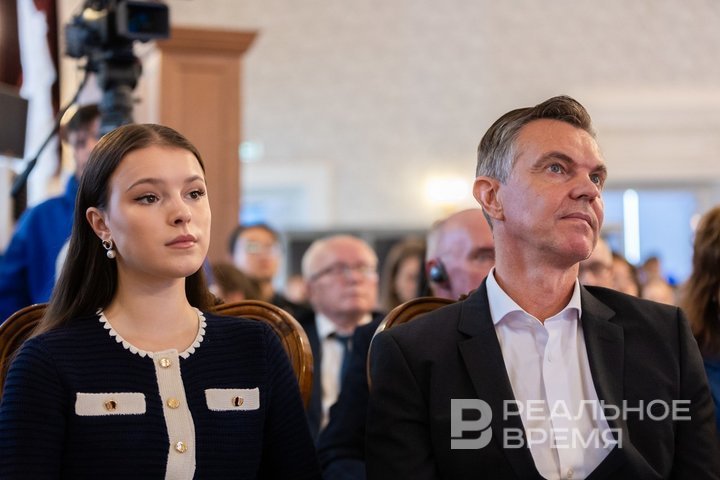
Perhaps this bias is due to that the organiser of this event was the Information Bureau of the State Council of the People's Republic of China, the Consulate General of the People's Republic of China in Kazan and the Government of the Republic of Tatarstan as the host party.
Chinese fake
When the official part ended, the delegations of the BRICS countries moved to the second building of the KFU. There, on the ground floor in the Marble Hall, the Chinese side presented two exhibitions. The first is a collection of photographs that reflect life in the BRICS countries. Each photo has its own meaning. For example, a photo of a racing driver from Saudi Arabia. It was after her achievements in sports that women in the country gained the right to drive a car. And photographs were also presented that reflect problems (for example, environmental) and cultural traditions (the festival of colors in India or Maslenitsa in Russia).
After the photo exhibition BRICS Countries in the Lens, the exposition Great Series of Chinese Painting Through the Ages began. And this is one big misunderstanding. The main stand is a Chinese landscape and a river. It turned out to be the Volga, which miraculously merged with China. Let's say everyone has a different idea of creativity.
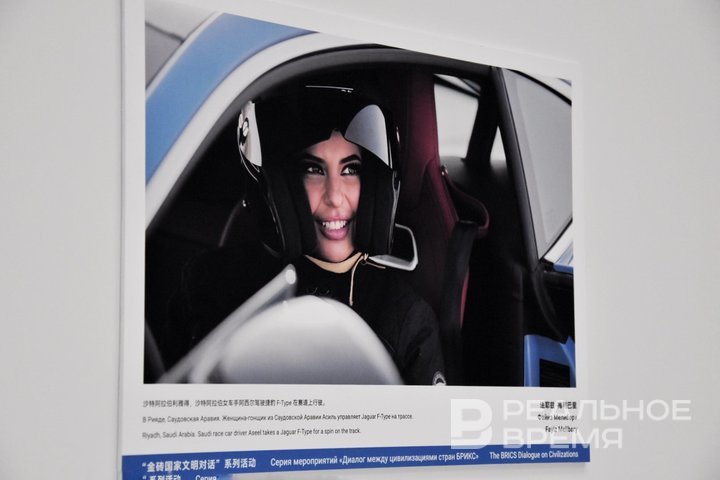
Before presenting samples of Chinese paintings to the public, the curator of the exhibition talked about China's achievements in the field of preserving cultural and historical heritage. He said that with the help of modern technologies, they have collected and systematised almost 12,500 works of art from 263 cultural and museum institutions around the world. Then all this was digitised and structured into 60 volumes and 226 convolutions. The most significant examples of painting, according to the curator of the exhibition, are just presented in Kazan.
And what is presented? Nothing. Just printed digitised works, framed and put on display. These are not originals. It seems to be even logical. Sometimes it is simply impossible to carry originals of works that are several thousand years old. Plus, enhanced security and special accommodation conditions would be required. But this is difficult to do in a university lobby.
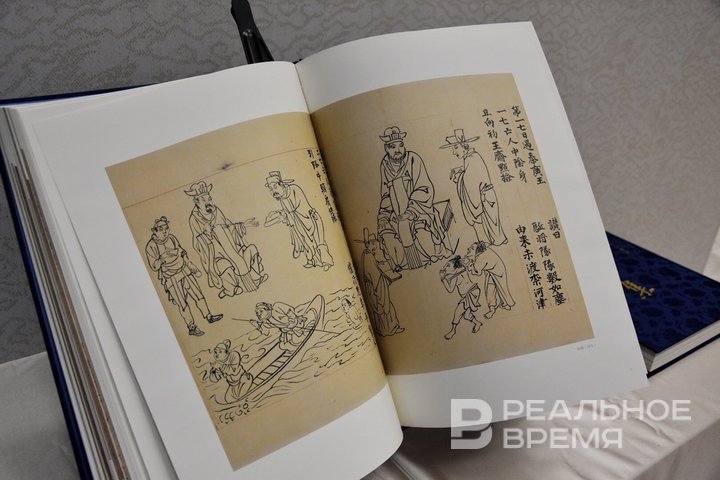
In such cases, they usually display copies. Very good copies that give the opportunity to evaluate the work of art and its features. For example, in the National Museum of Tatarstan one can see the Moabite Notebooks of Musa Jalil. These are copies. The originals are brought out to the public for one day once a year. This is practiced in many museums in order to preserve the historical heritage. Sometimes reproductions are also displayed in public spaces in order to introduce art to as many people as possible. Such public spaces can be parks or the same universities, as in the case of Chinese painting. But there is nuance.
Visitors to such exhibitions are always warned that they are looking at reproductions, not original works of art. It was not Chinese paintings that were brought to Kazan at all, but reproductions of paintings by Chinese painters. Only there is no mention of it anywhere. While the curator of the exhibition, talking about the exhibits, called them works of art. And until some point, the forgery was not noticeable. Until he came to a roll of oilcloth paper on which the print of an ancient scroll is printed. This roll of a country tablecloth was not protected in any way (why? You can print it again). The curator talked about what is depicted on the package, periodically touching it with his fingers. And when you get closer, anyone can see that it's not even a copy, but just a print.
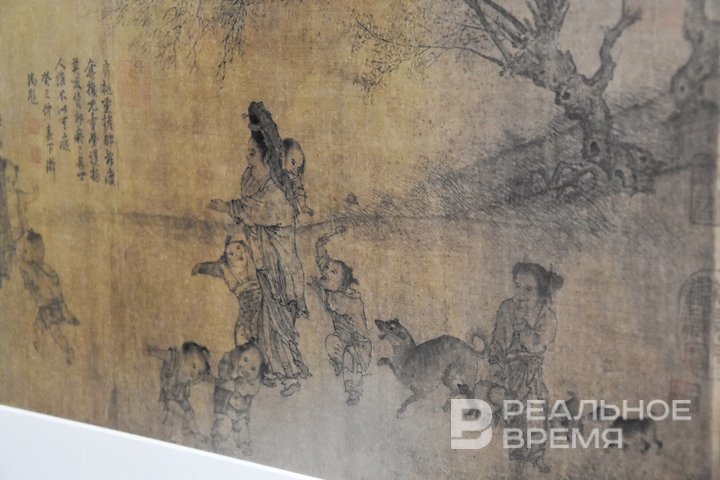
By the way, the curator of the exhibition talked for a very long time about one exhibit and its value. He said that they took the painting to an exhibition in the USA, where the work made a furore. It's a pity he didn't explain that it was the original that made a furore.
It all looked like props and reminded of street markets packed with inexpensive clothes from China, where people bought Abibas under the guise of Adidas sneakers. It is sad that many visitors to the exhibition were sure that they were not even looking at copies, but originals. They told Realnoe Vremya about this themselves. Later, we clarified this information with a representative of the Chinese delegation. He looked surprised and said, “Of course not. The originals are in Chinese museums and galleries.”
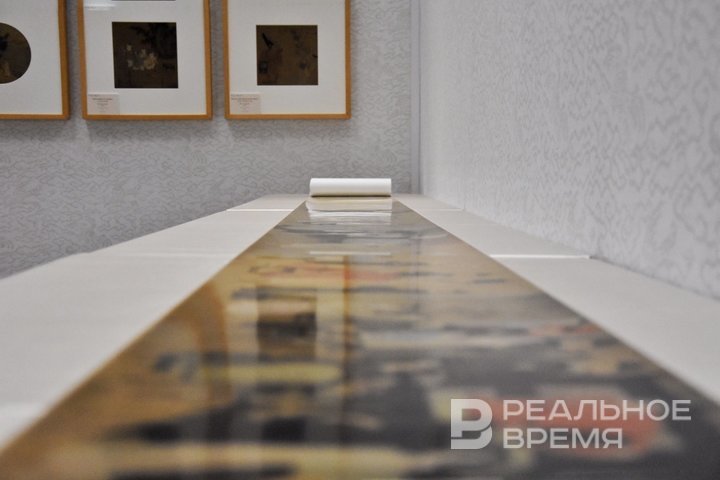
In general, the Chinese have a peculiar understanding of the preservation of historical heritage. For example, the historical centre of Shanghai is not exactly the historical centre that we imagine. They just demolished everything and built the same buildings from new materials. Only the facades were copied, but the interior of the buildings was designed according to modern requirements. It's the same with the Great Wall of China. The part that is refined and accessible to tourists is modern replica. The old ruins of the wall were dismantled and everything new was built from new materials. That is, there is zero historical value in this fragment of the Chinese Wall. It's just a tourist attraction. But the Chinese call it the preservation of historical heritage.
Among the fake works of art at the exhibition at the Kazan University, there was still a place for the genuine. In a small nook, it was possible to make a print with a text written in hieroglyphs. Visitors were given a choice of a poem by an ancient Chinese poet with a description of the autumn landscape and a quote from Xi Jinping.
Ekaterina Petrova — a literary reviewer for Realnoe Vremya online newspaper, author of Poppy Seed Muffins Telegram channel, founder of the first online subscription book club Makulatura.